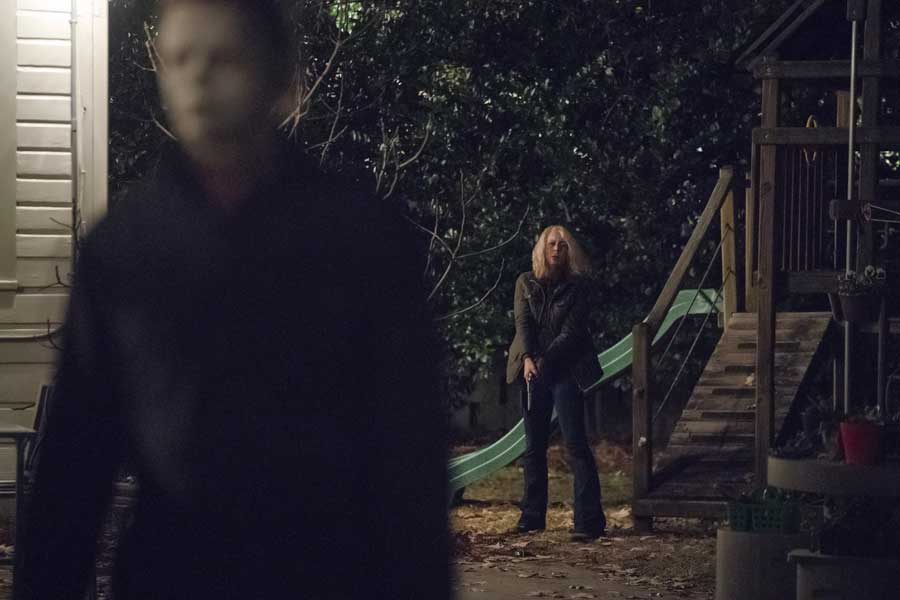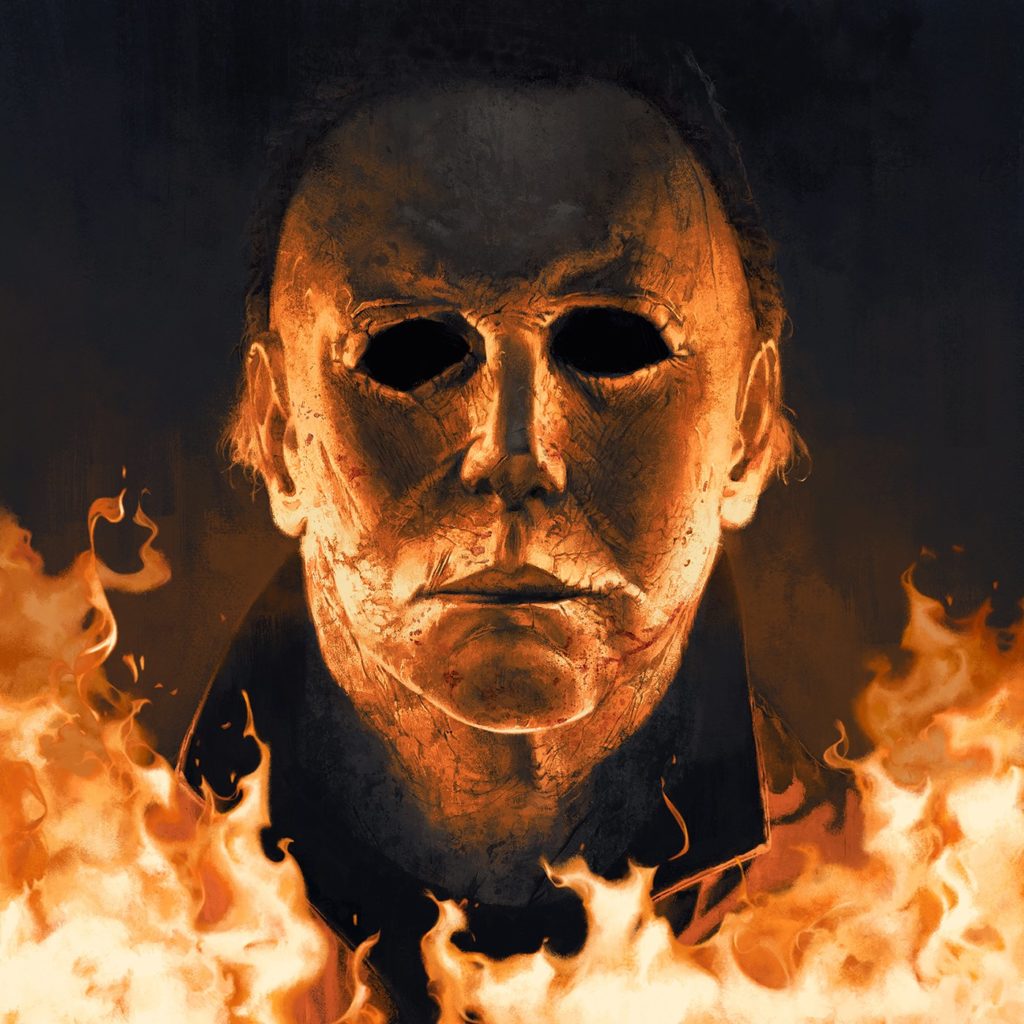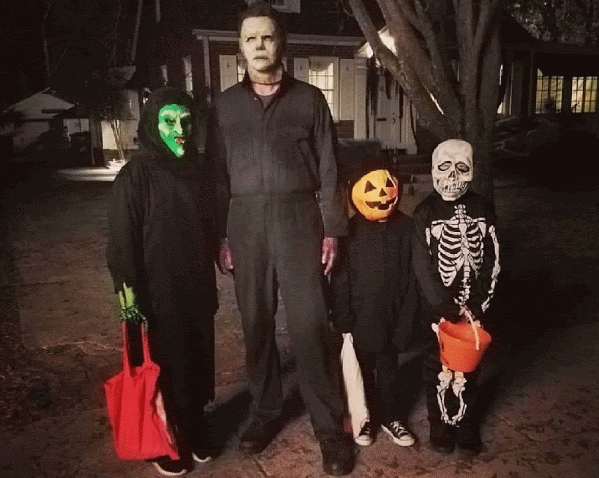Why the 2018 “requel,” featuring the return of John Carpenter and Jamie Lee Curtis, is the best direct sequel to the original 1978 classic.
In the 2010s, David Gordon Green came along and pitched an idea to John Carpenter. Green proposed making a new film for the Halloween series that would establish a brand new timeline, but with an extra twist. This new film would be a direct sequel to just the 1978 original, ignoring all the other entries in the series (as well as the remakes). Green further proposed eliminating the “siblings” subplot that Carpenter first introduced in Halloween II (1981), re-establishing that Michael Myers and Laurie Strode are totally unrelated strangers. Jamie Lee Curtis would also become “the New Loomis” and take Donald Pleasence’s place as Haddonfield’s resident Boogeyman-hunter. Many people would balk at this suggestion, for the idea that Michael and Laurie are siblings has been considered “canon” for decades now. But John Carpenter, having always felt a little embarrassed over Halloween II, absolutely loved Green’s idea and signed on to be an executive producer, creative consultant, and composer for the film (his first involvement with the franchise since Halloween 4 was still in pre-production in 1988). It was almost too good to be true!

I can’t remember who it was, but when David Gordon Green’s Halloween (2018) was first released, some dingbat film critic trashed the notion that “Directors can apparently change canon at the drop of a hat now.” Whoever made that statement must not be a very good film historian, otherwise they’d know these movies have already been changing their own “canon” for decades (see 1998’s Halloween H20: Twenty Years Later as a good example). Halloween isn’t the first franchise to do this, either. Just look at Hammer Films and Toho Studios, which created alternate timelines for both Count Dracula and Godzilla in the 1970s and 1980s, respectively. The so-called “requel” is nothing new, and bringing the Shape back for a new spin on what happened after “The Night He Came Home” is really no different from letting Christopher Nolan take a crack at Batman. The Halloween flicks aren’t for everybody, but neither is this foolish idea that every film in a series must necessarily take place in the same cinematic universe.
That being said, the 2018 Halloween begins with two podcast reporters (Jefferson Hall and Rhian Rees ) who are visiting Smith’s Grove Sanitarium in Illinois to see Dr. Ranbir Sartain (played by Haluk Bilginer) and his patient, Michael Myers (James Jude Courtney). We learn that shortly after the events of John Carpenter’s Halloween, Dr. Loomis tracked Myers through the neighborhood and was about to nail the fucker with another six slugs to the chest when the local PD showed up and “de-escalated” the situation. Myers was brought into custody and returned to the sanitarium, and Loomis was revoked of his license to practice medicine, which is how Sartain took over. Now it’s 40 years later, Loomis is deceased, and Myers is about to be transferred to a maximum security prison, where he is expected to rot. The reporters try to stoke a reaction from Michael by pulling out that odd, white, faceless mask he wore while stalking his victims in 1978. Myers gives them nothing, but every other patient in the sanitarium suddenly goes rabid, and that tells us right there that these idiot reporters just made a really bad mistake.

Next, the reporters go to Haddonfield to visit Laurie Strode, the only teenager among Michael’s victims to survive—the one who fought back and lived. We learn that over the past 40 years, Laurie had a daughter named Karen (played in adult form by Judy Greer); but Laurie continues to exhibit terrible PTSD, and she’s also become a survivalist gun-nut. Her day-to-day behavior is so alarming, in fact, that the state eventually took Karen away from her custody. Mother and daughter have been estranged ever since, and Laurie now lives in a lonely old house in the woods, with an armory fit for Armageddon. She has always known deep in her heart that Michael Myers will escape again one day, and that the mysterious Shape will stalk the streets of Haddonfield once more. And when that happens, Laurie aims to finish what the local police prevented Dr. Loomis from doing all those years ago, once and for all.
The reporters don’t get much farther with Laurie than they did with Michael; they’re disrespectful to her, suggesting she’s just a hysterical old woman and no one should believe or listen to her. But instead of being silenced, Laurie kicks them the fuck out and goes right back to preparing for the Big Blow-Up. Then she goes to visit her granddaughter, Alyson (Karen’s daughter, played by Andi Matichak), who is experiencing her own share of maternal estrangement. It seems the adult Karen Strode still carries all her childhood demons from growing up under Laurie; for while she is much more stable and capable of raising a family than the elder Strode, she has nevertheless succeeded in alienating her daughter as well. She has restricted Alyson’s access to her grandmother so much that the two of them must meet in secret if they are to interact with each other at all. And while Karen thinks Laurie is just an attention-seeking prophet of doom, Alyson knows her grandmother’s trauma and grief are completely authentic.

It’s only a matter of time, of course, before Laurie’s prophecies about Michael Myers all turn out to be 100% true. The patient somehow manages to escape from a prison bus while he is being transferred to the maximum security facility on Halloween Eve. Then he tracks down the two podcast reporters at a local gas station to retrieve his mask from their belongings. I have to admit, this is the most thrilling sequence I’ve witnessed in any Halloween movie since the late 1980s. Michael Myers is somehow even more intimidating when he’s out of costume, walking around in broad daylight, with everyone around him none the wiser. This part of the film also made me realize just how much Myers resembles a Batman villain like the Scarecrow—complete with escaping from a psychiatric prison and dressing in a costume that seems to enhance (rather than conceal) his true personality. For when Michael finally retrieves his mask and wears it once again, he reverts to his true identity as “the Shape.”
(Beware of spoilers!)
So the Shape returns to Haddonfield and invites itself into random people’s homes, carving the residents up like jack-o’lanterns. It then crosses paths with Alyson while she’s walking home from a school dance, but she manages to elude it and find Officer Hawkins (Will Patton), who’s out patrolling the neighborhood with Dr. Sartain. Hawkins, Sartain, and Alyson then encounter the Shape again, and when Hawkins prepares to kill it, Dr. Sartain goes apeshit and kills the cop. Then he throws an unconscious Shape in the backseat of Hawkins’ police car (along with Alyson) and drives off toward Laurie Strode’s house. He explains that he’s obsessed with learning the secrets of Michael’s true motives, and that he believes he can uncover those secrets by forcing a showdown between Laurie and the Shape. But once they’ve almost reached the Strode house, the Shape re-awakens and tears the police car to shit with its bare hands. Alyson manages to escape by the very skin of her teeth, but things don’t go so well for Dr. Sartain, whom the Shape soon dispenses with. Then the Shape sees Laurie’s house down the road, and the Big Blow-Up between Strode and Myers begins.

Some people complain profusely about this plot twist with Dr. Sartain, claiming that it totally “came out of left field” or “served no purpose” for the story; but I thought it was absolutely brilliant, and for several reasons. First off, it’s clear that while Laurie and Sartain both believe the Shape wants to get her, the Shape itself has very different ideas. While Laurie has never stopped dwelling on that fateful Halloween night in 1978, the Shape doesn’t appear to even remember who she is. Imagine that someone attacked you and traumatized you several years ago, to the point where everything you do in your life is now shaped and dictated by that awful experience. Now imagine that you will finally have a chance to confront your tormentor several years down the road, only to learn that he doesn’t even remember you or the things he did to you! Not because he’s been “rehabilitated” or because he honestly forgot, but simply because you are insignificant to him in every possible way. While Laurie has focused all her energy on destroying the Shape for the past 40 years, the Shape hasn’t thought about her even once since 1978, and that is some awful dark shit right there.
If it seems strange that a Halloween movie would feature another villain apart from the Shape, we need only remember Halloween 6. I believe the Sartain character is actually an homage to Dr. Terence Wynn, the “Man in Black.” According to Halloween 6, there are other people in Haddonfield who know what the Shape really is aside from Dr. Loomis, but who want to “control” or “understand” it rather than destroy it. Dr. Wynn and his “Thorn Cult” learned the hard way that this impossible, and Dr. Sartain learns the exact same lesson here. There are quite a few homages to earlier films in this movie, so I’m pretty certain this resemblance between Wynn and Sartain is intentional. I think the idea of the Shape having “fans” or “helpers” is not only interesting from a narrative perspective, but also quite scary and realistic. Just look at how people idolize monsters like Charles Manson or John Wayne Gacy in real life.

There are also numerous clues in the first half of the film that the Sartain plot twist is coming. Dr. Sartain is the one who deliberately allows the podcast reporters to taunt Michael with his mask at the start of the film. (What the hell kind of doctor lets the press fuck with his patient like that? Dr. Loomis would not have approved!) He also insists on accompanying Myers on the prison bus, and he is the only survivor we see on the bus after Michael’s escape. (Did Michael really kill all those guards—or did Sartain do it?) The doctor also says a lot of asinine things about empathizing with Michael, as if he doesn’t give a shit about any of the victims. Finally, when Laurie Strode and Dr. Sartain meet for the first and only time in the film, Laurie refers to him as “the New Loomis,” given his inherited role as Michael Myers’ psychiatrist. This line is absolutely loaded with irony considering that Sartain later turns out to be in cahoots with the Shape, and that Laurie herself turns out to be a much better Loomis than Sartain could ever be!
I also enjoy the Sartain plot twist because I honestly didn’t see it coming; despite all the clues, David Gordon Green does a masterful job of hiding the surprise, and it truly caught me off guard when I first watched the film. I can’t tell you how many times I will sit down and watch a new horror movie I’ve never seen before, only to correctly guess everything that’s going to happen throughout the film. I have even lower expectations when it comes to slasher movie sequels, which tend to follow a very rigid formula. So the fact that this sequence surprised me as much as it did is nothing short of amazing. And considering how important Sartain actually is to the story (mind you, he is the only reason Michael and Laurie ever cross paths), he has now become one of my favorite characters in the franchise. (Too bad he won’t be showing up in any more sequels, unless it’s in a flashback!)

Each of the male characters in this film is either helpless (like Officer Hawkins), untrustworthy (like Alyson’s boyfriend Cameron), or downright evil (like Myers and Sartain). There is a recurring theme about women not being heard and not being believed (not only by men, but by other women as well). After Michael was apprehended in 1978, no one aside from Laurie and Dr. Loomis seems to have considered him responsible for his own actions. The State of Illinois simply locked him away again, and everyone moved on. When the podcast reporters question Laurie about this, they seem to take Michael’s side for some reason, excusing him for his actions in 1978 because “He’s crazy” and “It happened so long ago.” So Laurie isn’t just fighting the Shape here; she’s fighting the entire patriarchy, which cares more about her tormentor’s side of the story than her own. In this way, David Gordon Green’s Halloween is really the only sequel in the entire franchise that taps into one of the original 1978 film’s most important themes: how society protects and even aids monsters like Michael Myers by gaslighting their victims. When the Strode women finally band together at the end to tackle the Shape, they aren’t just taking down a man in a mask; they are taking down the entire toxic narrative their patriarchal society has used to keep them disempowered for so long.
Another thing I love about this movie is the fact that the “babysitters-in-jeopardy” element of the story is limited to just the second act. We’ve already seen Michael Myers stalk babysitters for 90 minutes at a time (several times, in fact); there is so much more he can do as a character. David Gordon Green proves this by using the first and final acts to elaborate on things we’ve never seen in any Halloween movie before. The first act does a fantastic job of putting us in Laurie’s head, exploring her complexity as she alternates between her doomsday prepping and her struggles with PTSD. And the final act is a real powerhouse, escalating the conclusion of the 1978 original to full-blown action movie proportions. Now that Green is currently filming not one but two more Halloween films (to be released in October 2021 and 2022, respectively), I’m very excited to see what other new situations he might throw these characters into next. (I’ve always wanted to see the Shape square off against an entire SWAT Team, myself!)

Without a doubt, David Gordon Green’s Halloween wins my vote for “Absolute Best Direct Sequel to the 1978 Original” (a title previously held by Halloween 4). This isn’t just some run-of-the-mill slasher movie; this is an example of how one night of terrible violence can still affect people several decades afterwards (even if they weren’t even born yet at the time!). And while the Halloween series has always featured strong female protagonists, the 2018 requel deserves special recognition for bringing this theme to a whole new level. I really can’t recommend it highly enough, especially for viewers who enjoy seeing powerful women beat the stuffing out of evil men (like I do!).

